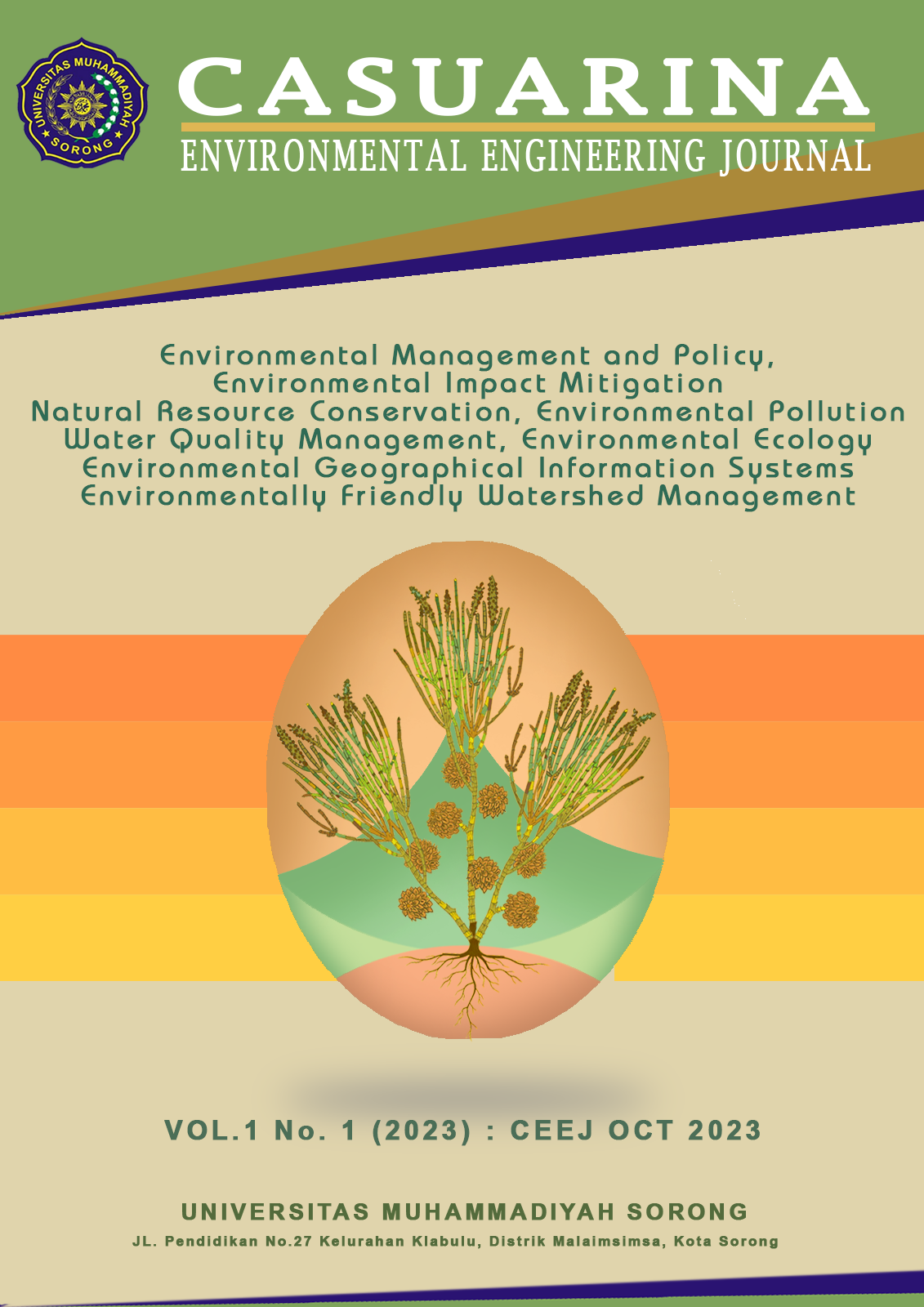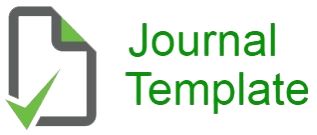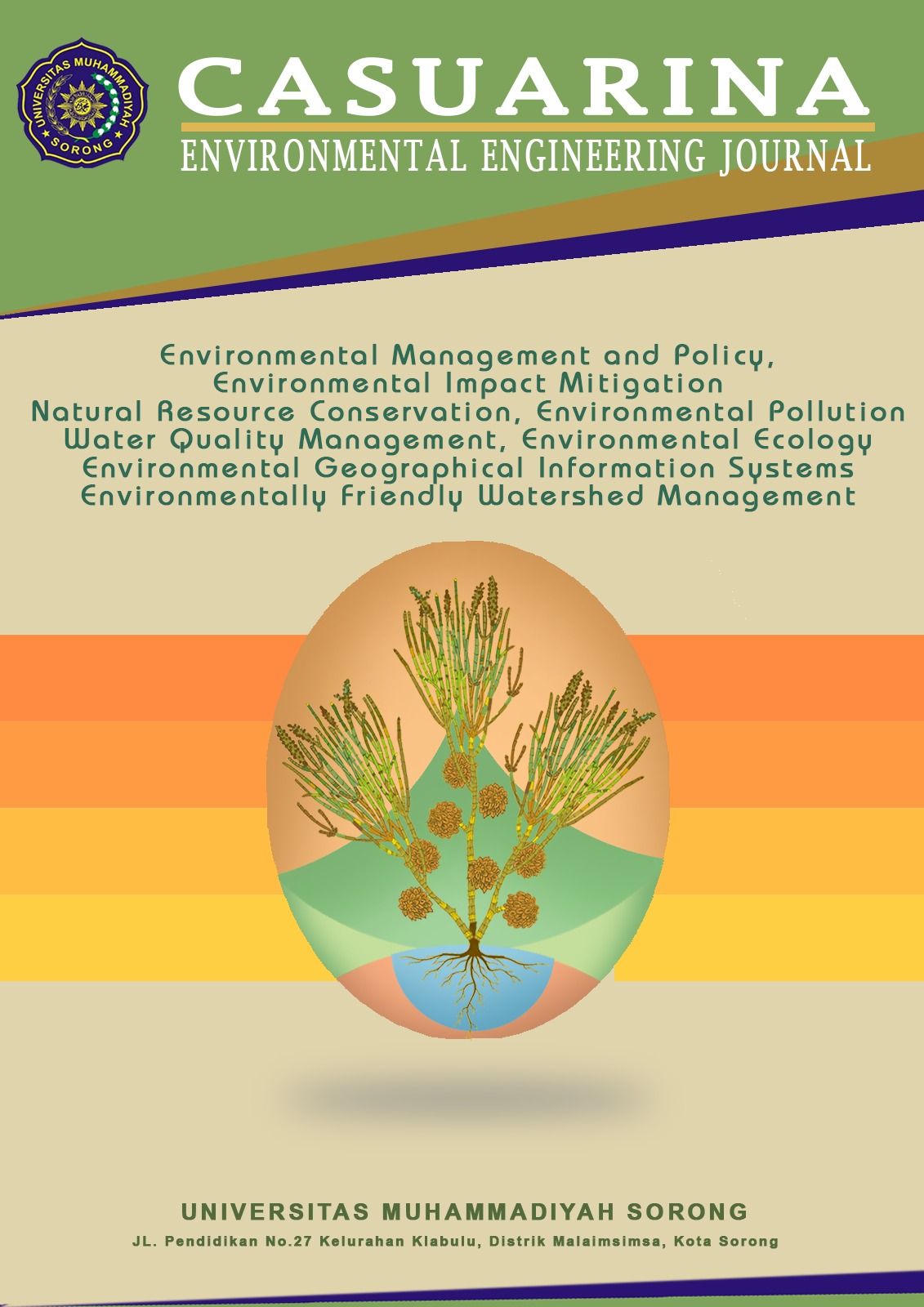Analysis of Air Quality Wet and Dry Deposition Parameters in Sorong in 2022
DOI:
https://doi.org/10.33506/ceej.v1i1.2748Keywords:
Air Quality, Chemical Precipitation, Passive Gas, Rainfall, Suspended Particulate MatterAbstract
Acid deposition is a phenomenon of air pollution that is mostly associated with energy activities that emit acidic pollutant compounds into the atmosphere. Acid deposition is one of the effects of air pollution. Observation of air quality in Sorong City is needed to determine the level of air pollution that occurs due to natural factors and anthropogenic activities. Observation of acid deposition in Sorong City was carried out with two parameters, namely wet deposition and dry deposition. Observation of wet deposition using chemical measurements of rainwater in the form of pH, Conductivity, and Mineral Ion Concentration. Observation of dry deposition using SPM Particulate and Passive Gas (SO2 and NO2) parameters. The results show that the level of acidity (pH) of rainwater in Sorong City during 2022 is included in pH category of acidic rainwater that tends to be neutral. Meanwhile, the result of conductivity value is 2.2 – 50.9 µS/cm. The chemical composition in rainwater in Sorong City is dominated by chloride ions, sulfate ions, potassium ions and sodium ions, where the number of anions accounts for 59% of the total ions present in rainwater, and cations contribute 41%. During January to December 2022, daily SPM concentrations were in the range of 8.63 - 96.24 µg/m3. Based on the value of the quality standard, both daily and yearly, SPM value is still far below the applicable threshold value. The results of SO2 and NO2 measurements in Sorong City also show that concentration values are still below the air quality standard values.
References
T. Budiwati, A. Budiyono, W. Setyawati, A. Indrawati, 2010, “Analisis Korelasi Pearson untuk Unsur-Unsur Kimia Air Hujan di Bandung”, Jurnal Sains Dirgantara Vol.7 No.2 Juni 2010:100-112.
S. Hastutiningrum, S. Sunarsih, and Imelda, “Biofuel Production from Candlenut Oil Using Catalytic Cracking Process with Zn / Hzsm-5 Catalyst,” ARPN J. Eng. Appl. Sci., vol. 9, no. 11, pp. 2121–2124, 2014.
Kementerian Negara Lingkungan Hidup & EANET, 2009, “Deposisi Asam: Apakah Itu, dan Apa Yang Bisa Kita Lakukan Untuk Menguranginya?”
S. N. Pandis, and J. H. Seinfeld, 1998, “Atmospheric Chemistry and Physics: From Air Pollution to Climate Change”, A Wiley-Interscience Publication Second Edition, John Wiley & Sons, Inc.
P. C. Mouli. S. V. Mohan, and S. J. reddy, 2004, “Rainwater Chemistry at A Regional Representative Urban Site: Influence of terrestrial Sources on Ionic Composition”, Elsevier: Atmospheric Environment 39 (20005) 999 – 1008.
E. Adrian, E. Kurniawan, and S.D.A. Kusumaningtyas, 2014, “Layanan Kualitas Udara dari Hujan Asam Hingga Gas Rumah Kaca”, Penerbit Puslitbang, Badan Meteorologi Klimatologi dan Geofisika, Jakarta.
Badan Pusat Statistik, 2023, “Statistik Daerah Kota Sorong Dalam Angka”, BPS Kota Sorong.
Kementerian Lingkungan Hidup dan Kehutanan, 2020, “Pemantauan Mutu Udara Ambien Dengan Metode Passive Sampler”, https://ditppu.menlhk.go.id/portal/read/pemantauan-mutu-udara-ambien-dengan-metode-passive-sampler/diakses pada tanggal 20 Agustus 2023.
V. P. Campos, L.P.S. Cruz, R.H.M. Godoi, A.F.L. Godoi, and T.M. Tavares, 2010, “Development and validation of passive samplers for atmospheric monitoring of SO2, NO2, O3 and H2S in tropical areas”, Microchemical Journal 96 (2010) 132–138.
F. A. Qosthalani, 2014, “Metode Gravimetri dalam Alat High Volume Air Sampler (HVAS) Sebagai Cara Kuantitatif Mengukur Kualitas Debu dalam Udara”, Paper Fakultas MIPA Universitas Indonesia.
I. Pabalik, N. Ihsan, and M. Arsyad, 2015, “Analisis Fenomena Perubahan Iklim dan Karakteristik Curah Hujan Ekstrem di Kota Makassar”, Jurnal Sains dan Pendidikan Fisika, 11(1)
W. R. Safitri, 2016, “Analisis Korelasi Pearson dalam menentukan Hubungan Antara Kejadian Demam Berdarah Dengue dengan kepadatan Penduduk di Kota Surabaya pada Tahun 2012-2014”, Journal STIKES Pemkab Jombang
S. Siregar, 2013, “Statistik Parametrik untuk Penelitian Kualitatif”, Bumi Aksara: Jakarta.
Sudjana, 2005, “Metoda Statistika”, Tarsito, Bandung.
E. Adrian, and R. D. Susanto, 2003, “Identification of Three Dominant Rainfall Regions Within Indonesia and Their Relationship to Sea Surface Temperature”, International Journal of Climatology 23: 1435-1452.
Badan Meteorologi Klimatologi dan Geofisika, 2023, “Informasi Meteorologi dan Klimatologi Stasiun Meteorologi Kelas I DEO Sorong”, Buletin Maladum Meteomaps Edisi Bulan Juni 2023, BMKG Sorong
E. Hermawan, 2010, “Pengelompokkan pola curah hujan yang terjadi di beberapa kawasan pulau Sumatera berbasis hasil analisis teknik spectral”, Jurnal Meteorologi dan Geofisika, 11(2): 75 – 85.
R. Muharsyah, 2017, “Kajian Verifikasi Produk Prakiraan Curah Hujan Bulanan (2003-2012)”, Jurnal Meteorologi Dan Geofisika, 18(1), 33–44.
Khairunnas and M. Gusman, 2018, “Analisis Pengaruh Parameter Konduktivitas, Resistivitas dan TDS Terhadap Salinitas Air Tanah Dangkal pada Kondisi Air Laut Pasang dan Air Laut Surut di Daerah Pesisir Pantai Kota Padang”, Jurnal Bina Tambang, Vol.3, No.4.
Badan Meteorologi, Klimatologi dan Geofisika, 2023, “Informasi Kimia Air Hujan”, https://www.bmkg.go.id/kualitas-udara/informasi-kimia-air-hujan.bmkg/diakses pada 21 Agustus 2023
A. Indrawati, D. A. Tanti, Mulyono, and T. Budiwato, 2017, “Pengaruh Parameter Meteorologi Terhadap Deposisi Sulfur Dan Nitrogen”, Prosiding Seminar Nasional Sains Atmosfer – PSTA, LAPAN.
E. Nurmala, Budiyono, and Suhartono, 2018, “Hubungan Konsentrasi Suspended Particulate Matter (Spm) Udara Ambien Dan Kondisi Cuaca Dengan Angka Kejadian Asma Di Kecamatan Semarang Barat Tahun 2015-2017", Jurnal Kesehatatan Masyarakat, Vol. 6, No. 6.
Sekretariat Negara Republik Indonesia, 1999, “Peraturan Pemerintah Republik Indonesia Nomor 14 Tahun 1999 Tentang Pengendalian Pencemaran Udara”.
J. B. Shukla, A. K. Misra, S. Sundar, and R. Naresh, 2008, “Effect of rain on removal of a gaseous pollutant and two different particulate matters from the atmosphere of a city”, Math. Comput. Model, 48(5-6): 832- 844.
K. Belanger, J.F. Gent, E.W. Triche, M.B. Bracken, and B.P. Leaderer, 2006, “Association of Indoor Nitrogen Dioxide Exposure with Respiratory Symptoms in Children with Asthma”, American Journal of Respiratory and Critical Care Medicine, Vol. 173, pp. 297-303.
Downloads
Published
How to Cite
Issue
Section
License
Copyright (c) 2023 Casuarina: Environmental Engineering Journal

This work is licensed under a Creative Commons Attribution-NonCommercial-ShareAlike 4.0 International License.
Please find the rights and licenses in Casuarina: Environmental Engineering Journal. By submitting the article/manuscript of the article, the author(s) agree with this policy. No specific document sign-off is required.
1. License
The non-commercial use of the article will be governed by the Creative Commons Attribution license as currently displayed on Creative Commons Attribution-NonCommercial-ShareAlike 4.0 International License.
2. Author(s)' Warranties
The author warrants that the article is original, written by the stated author(s), has not been published before, contains no unlawful statements, does not infringe the rights of others, is subject to copyright that is vested exclusively in the author, and free of any third party rights, and that any necessary written permissions to quote from other sources have been obtained by the author(s).
3. User/Public Rights
Casuarina: Environmental Engineering Journal's spirit is to disseminate articles published are as free as possible. Under the Creative Commons license, Casuarina: Environmental Engineering Journal permits users to copy, distribute, display, and perform the work for non-commercial purposes only. Users will also need to attribute authors and Casuarina: Environmental Engineering Journal on distributing works in the journal and other media of publications. Unless otherwise stated, the authors are public entities as soon as their articles got published.
4. Rights of Authors
Authors retain all their rights to the published works, such as (but not limited to) the following rights;
- Copyright and other proprietary rights relating to the article, such as patent rights,
- The right to use the substance of the article in own future works, including lectures and books,
- The right to reproduce the article for own purposes,
- The right to self-archive the article (please read our deposit policy),
- The right to enter into separate, additional contractual arrangements for the non-exclusive distribution of the article's published version (e.g., post it to an institutional repository or publish it in a book), with an acknowledgment of its initial publication in this journal (Casuarina: Environmental Engineering Journal).
5. Co-Authorship
If the article was jointly prepared by more than one author, any authors submitting the manuscript warrants that he/she has been authorized by all co-authors to be agreed on this copyright and license notice (agreement) on their behalf, and agrees to inform his/her co-authors of the terms of this policy. Sentralisasi will not be held liable for anything that may arise due to the author(s) internal dispute. Sentralisasi will only communicate with the corresponding author.
6. Royalties
Being an open accessed journal and disseminating articles for free under the Creative Commons license term mentioned, author(s) aware that Casuarina: Environmental Engineering Journal entitles the author(s) to no royalties or other fees.
7. Miscellaneous
Casuarina: Environmental Engineering Journal will publish the article (or have it published) in the journal if the article editorial process is successfully completed. Casuarina: Environmental Engineering Journal's editors may modify the article to a style of punctuation, spelling, capitalization, referencing, and usage that deems appropriate. The author acknowledges that the article may be published so that it will be publicly accessible and such access will be free of charge for the readers as mentioned in point 3.








